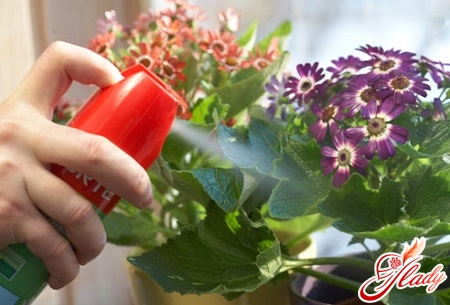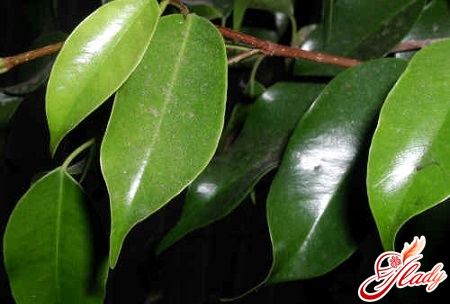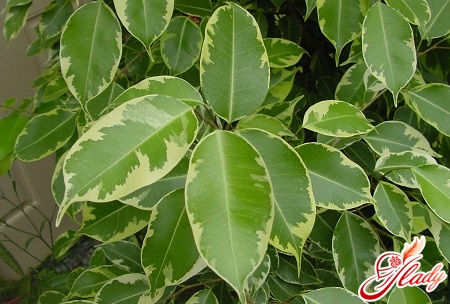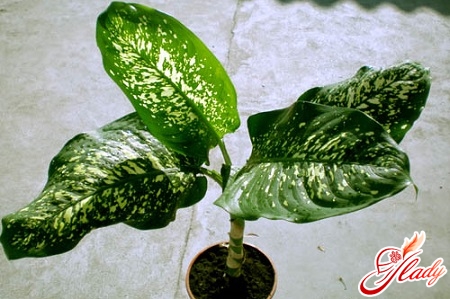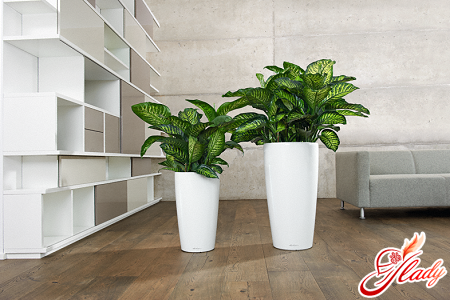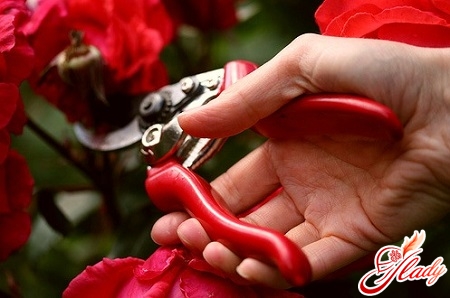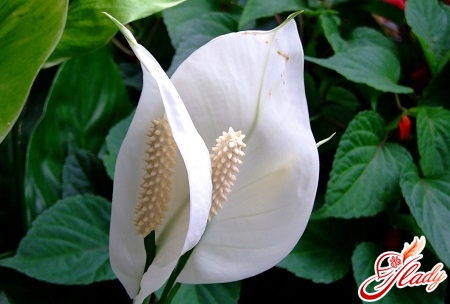 Among houseplants there are many such that wewe start not for the sake of beautiful flowers or lush greenery, but, above all, as talismans. True, most of these talisman plants still have a spectacular appearance. And to such room pets belongs spathiphyllum, which received the popular name "female happiness". And if this wonderful flower-mascot has appeared in your house, then you should try to create the most favorable conditions for him. And for this you need to find out what it is and what care should be taken for the spathiphyll at home.
Among houseplants there are many such that wewe start not for the sake of beautiful flowers or lush greenery, but, above all, as talismans. True, most of these talisman plants still have a spectacular appearance. And to such room pets belongs spathiphyllum, which received the popular name "female happiness". And if this wonderful flower-mascot has appeared in your house, then you should try to create the most favorable conditions for him. And for this you need to find out what it is and what care should be taken for the spathiphyll at home.
Botanical description
Appearance of this house plantreally quite effective. Unlike many indoor flowers, having a stem and leaves, sapatifillum looks more like a bouquet of elegant glossy leaves on high petioles. It becomes even more similar to the bouquet during the flowering period, when white, yellowish or cream flowers of a very unusual shape rise above the rosette of leaves on thin peduncles. The leaves of spathiphyllum grow directly from the ground, but this plant does not have the habitual stem in our understanding. It is a genus of non-stalked plants from the family of the aroids, which is represented by more than forty species. In the wild, spathiphyllum grows in Central and South America, as well as the Philippines, New Guinea, the Solomon Islands and the Moluccas. Spathiphyllum grows in wet, swampy forests, along the banks of streams and rivers. Leaves in it are radical, pointed or oval, full of dark green color and glossy luster. Along the leaf there is a pronounced veinlet, from which short transverse veins diverge, so that a distinctly visible relief pattern is formed on the sheet. The flower spathiphyllum is an inflorescence with an elongated cob and a coverlet of white, yellowish or cream color. Blooms spathiphyll long enough - for several weeks. Flowering occurs usually in the spring, but the re-spathiphyllum can bloom at any other time of the year. So even in the flowering period, and at other times this flower does not lose its decorativeness. However, the popularity of spathiphyllum is explained not only by its spectacular appearance, but also by its unpretentiousness in care. Special hassle to its owners, this indoor flower does not deliver, but, nevertheless, it blooms only in comfort for themselves. 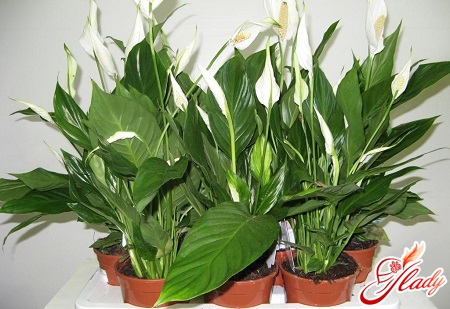
Conditions of maintenance and care
Comfortable for spathiphyll conditionsthere will be a situation as close as possible to its natural habitat. And in nature, as we have already said, it grows in shady swampy forests. Therefore, it is necessary to place the flower in a room with scattered light and protect it from direct sunlight. The moist environment is provided by frequent watering and constant spraying of both the plant itself and the air around it. Spathiphyllum refers to heat-loving tropical plants, therefore it does not tolerate low temperatures and is afraid of drafts. The preferred temperature for the content of this plant is 22-23 degrees Celsius. It is permissible to lower it to 18 degrees in the summer-spring period, and in winter, the optimum temperature for spathiphyllum content is 18-16 degrees, but not lower. To grow spathiphyllum, a loose and water-intensive soil mixture based on peat is needed. Heavy soil coalesces and thickens after watering, which prevents aeration of the soil and access of oxygen to the roots of the plant. Proper care for spathiphyllum is just to ensure comfortable conditions for him. So, for example, this water-loving flower needs year-round watering. And in summer, watering should be more abundant and more frequent than in winter and autumn. It is noteworthy that with abundant watering it is necessary to let the upper layer of the earth dry in a flower pot. But even a short drying out of an earthy coma can lead to illnesses and death of a plant. Destructive for spathiphyllum and stagnation of water in the earth. Therefore, it should be watered abundantly, but only as the upper layer of the earth dries up. After watering, you need to dry the bottom of the flower pot and the pan. In winter, it is necessary to reduce the frequency of watering, but you should make sure that the soil in the pot does not dry completely. In winter and summer, the flower can be watered only with standing water. The same water should also be sprinkled with spathiphyllum. Sprinkle it often, but during the flowering period, you must do it carefully, trying not to get water on the delicate inflorescence. For lack or excess moisture, the plant reacts with the state of the foliage. If the moisture spathiphyllum is not enough, then its leaves droop. But with excessive watering on the leaves spathiphyllum may appear dark spots. Proper care implies periodic and timely fertilizing of the plant with complex fertilizers. To feed a flower is necessary only in the active period of growth - from the end of February to the beginning of autumn. In winter and late autumn in feeding, spathiphyllum does not need. Fertilize the plant during watering about once a week. For fertilizing use aqueous solutions of fertilizers in a concentration of one to one: one gram of fertilizer is diluted in a liter of water. Timely transplantation of spathiphyllum is the key to its good growth. If care of the flower is carried out according to all the rules, then it must be transplanted as the bush grows. That is, as soon as the aboveground part of the plant fills the entire surface of the earthy coma, the flower must necessarily be transplanted into a new, larger pot, But it is better not to wait for such a state of the spathiphyllum and transplant it every spring. When transplanting in a flowerpot, the soil mixture is replaced, and a drainage layer must necessarily be placed on its bottom. When transplanting, it is also possible to divide a greatly grown bush and thus obtain new plant specimens. Proper care for spathiphyll implies certain hygienic procedures. In addition to the fact that after every watering it is necessary to wipe the bottom of the flower pot dry, it is also necessary to wipe the leaves from dust and water traces after spraying. Wipe the flower with a soft damp cloth or cotton swab. And to enhance the shine, you can use special products designed to care for indoor plants with glossy leaves. 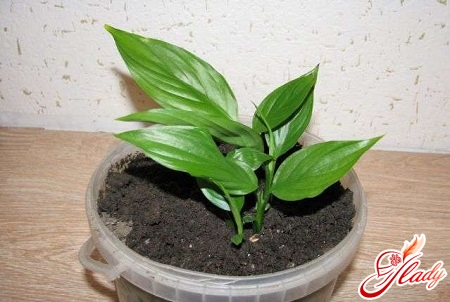
Possible problems
The main problems in cultivating thisplants become loss of leaf ornamentality and lack of flowering. The cause of yellowing and blackening of spathiphyllum leaves is usually the wrong care of the flower. So, for example, with a lack of moisture in the air and potassium salts in top dressing, the spathiphyllum leaves turn yellow. Irregularity, lack or excess of fertilizing, as well as excessive watering cause the blackening of its leaves. The absence of flowering is usually caused by an improperly selected pot. The fact is that blooms spathiphyllum only in the case when its roots almost completely fill the main space of the flower pot. By the way, if you believe people's signs, then he blossoms only in those houses where love and mutual understanding reign. So it is worth considering - perhaps, the reason for the unwillingness of the spathiphyllume to blossom is not the wrong treatment at all. And even if you know how to care for spathiphyllum, even if you do everything right, but it still does not bloom, then the reason may be an unfavorable psychological atmosphere in your home. However, whether or not to believe people's signs is your business. But it's not for nothing that spathiphyllum is called female happiness. But can a woman be happy who does not have everything in her house?




